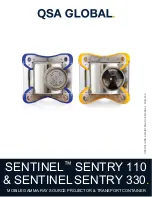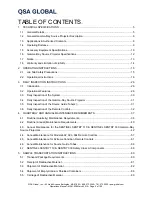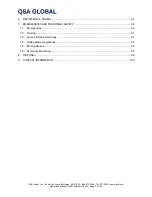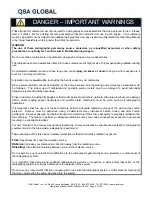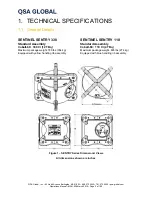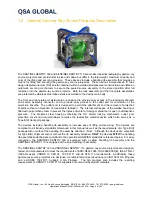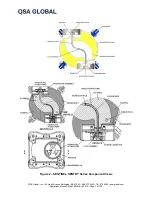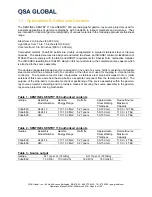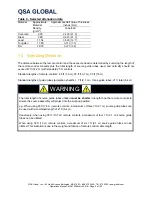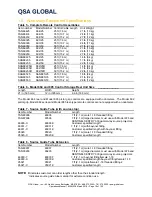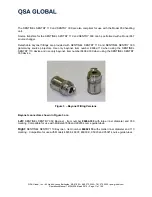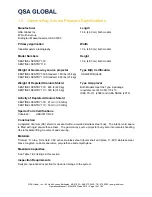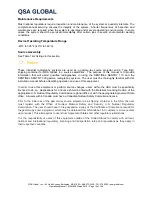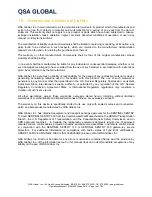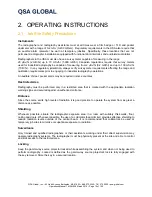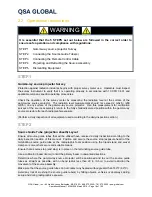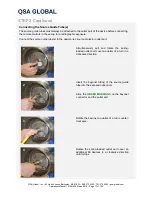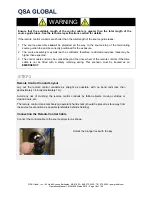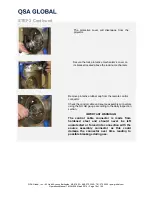
QSA Global, Inc.
40 North Avenue Burlington, MA 01803
888.272.2242
781.272.2000
qsa-global.com
Operations Manual
MAN-038 March 2019
Page 4 of 100
DANGER – IMPORTANT WARNINGS
These transport containers must only be used for radiography source assemblies that are approved for use. Please
refer to Tables 1 & 2 for a listing of source assemblies that are authorized for use in each design. The containers
must be operated only by trained and qualified radiographers who have read and understand this Operating Manual
or by trained assistants working under their direct supervision.
WARNING
The use of these radiographic gamma-ray source projectors by unqualified personnel or when safety
procedures are not fully met, could result in life-threatening dangers.
Do not use these containers for unauthorized, damaged or cropped source assemblies.
The radioactive source assemblies utilized in these containers emit high levels of highly penetrating radiation during
use.
An unshielded radiation source at close range can cause
injury, sickness or death
to anyone who is exposed to it
even for a short period of time.
A radiation source
must not
be touched by the hands under any circumstances.
Since gamma radiation cannot be detected by the human senses, strict operating and emergency procedures must
be followed. The proper use of calibrated and operable survey meters must be employed to avoid potentially
dangerous levels of radiation exposure.
Proper dosimetry including film badges or thermoluminescent dosimeters, optically stimulated luminescence badges
(OSL); direct reading pocket dosimeters and audible alarm ratemeters must be worn during all radiographic
operations.
It is imperative that the users of these containers perform adequate radiation surveys of the gamma-ray source
projector. Surveys must be performed using a calibrated survey instrument before, during and after source
exchanges, source exposures, and before transport to determine if the source assembly is properly shielded within
the container. The failure to perform an adequate radiation survey can cause unnecessary exposure to personnel
resulting in a reportable incident.
It is very important, and required by national regulations, to prevent access by unauthorized persons to radiographic
equipment and to the area where radiography is performed.
Take advantage of the three basic radiation protection methods to minimize radiation exposure:
Time:
Spend less time near the radiation source.
Distance:
Increase your distance in a direction away from the radiation source.
Shielding:
Use effective shielding between you and the radiation source.
Do not perform any unauthorized modifications to the radiographic gamma-ray source projector or components of
the radiography system.
It is important that trained and qualified radiographers perform or supervise a daily safety inspection of the
radiography system for obvious defects prior to operation of the system.
Do not use any components that are not approved for use with the radiography system, or after-market components
that may compromise the safety designed into the system.

